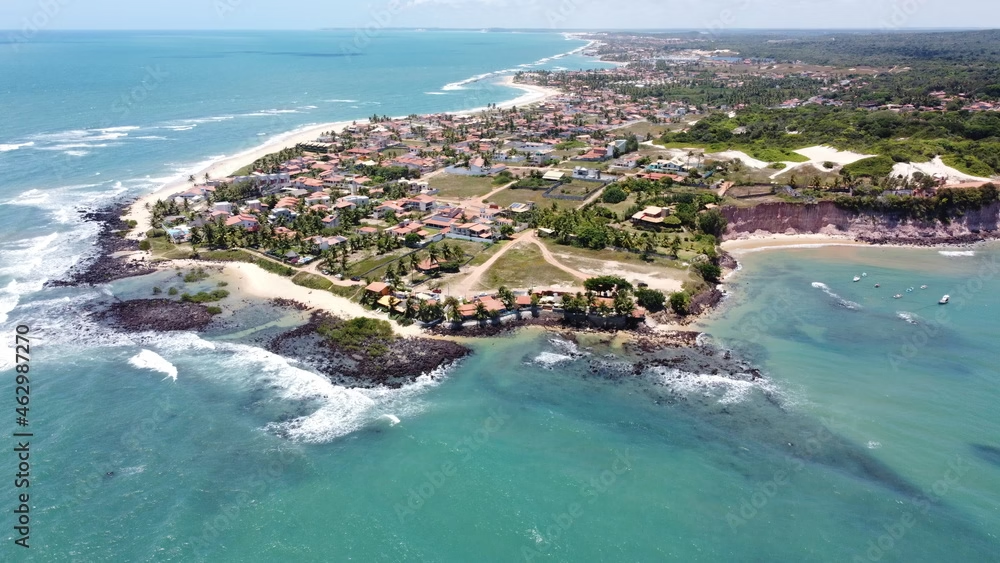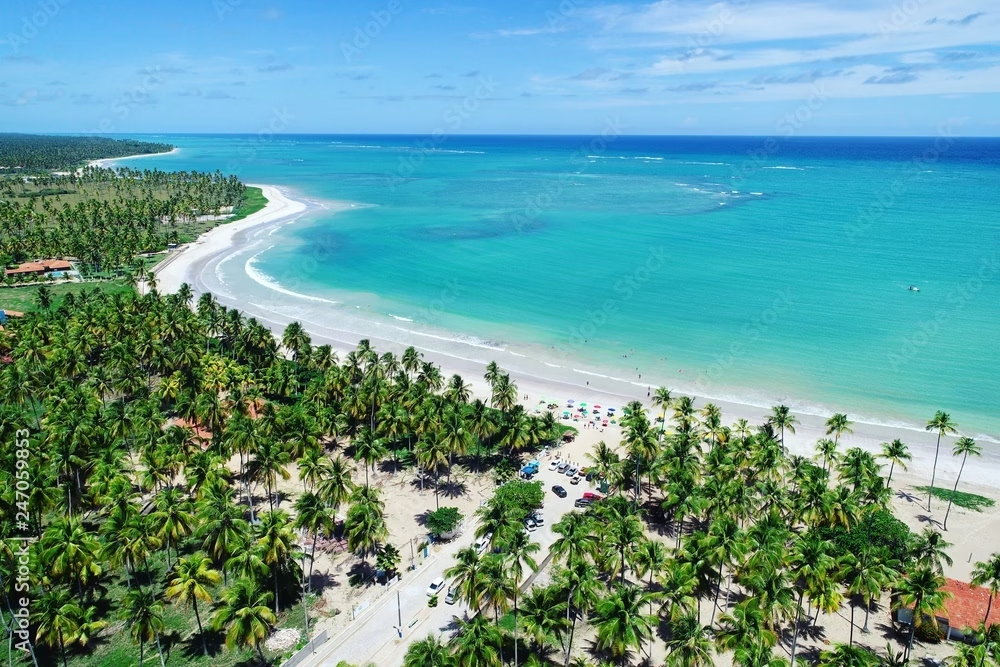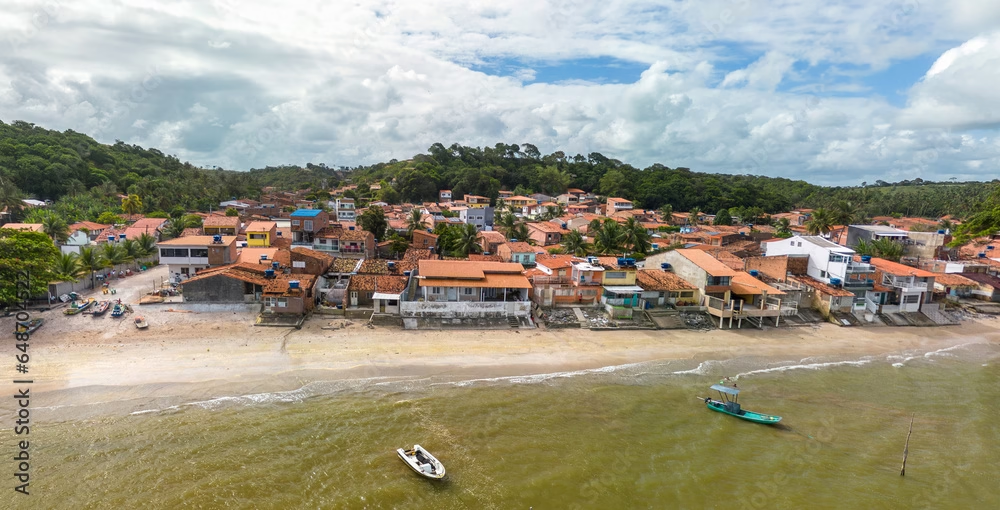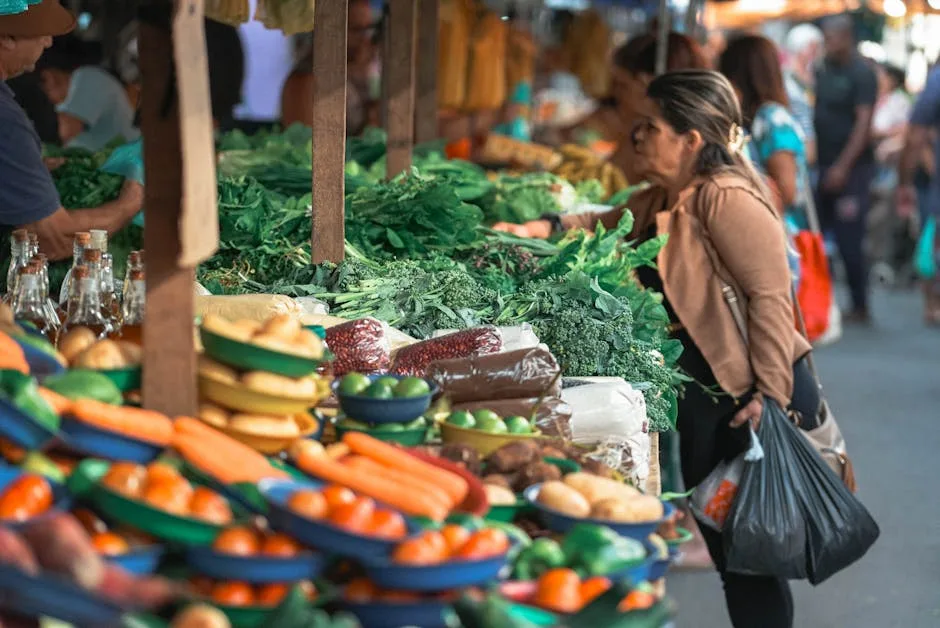Brazil is a country renowned for its stunning landscapes, vibrant culture, and diverse ecosystems. While the iconic attractions of Rio de Janeiro, the Amazon rainforest, and the beaches of Bahia understandably draw millions of visitors each year, there exists a plethora of hidden destinations that offer equally captivating experiences. These lesser-known places possess a unique charm and beauty that sets them apart from the traditional tourist hotspots.
The allure of exploring these hidden gems lies in their authenticity. As travelers increasingly seek out genuine experiences away from bustling crowds, these destinations provide an opportunity to immerse oneself in the local culture, history, and natural beauty. Whether it is basking in the tranquility of a secluded beach, hiking to a breathtaking waterfall, or engaging with friendly locals in small towns, these experiences often leave a lasting impression that more conventional attractions may not encapsulate.
In 2025, the inclination toward discovering off-the-beaten-path locations is expected to rise further, largely driven by the desire for personal connection and deeper cultural understanding. Travelers may find themselves yearning for stories and memories that reflect the essence of a destination rather than just visiting landmarks. Brazil’s hidden gems are often rich in history and offer unique experiences that larger tourist hubs simply cannot match.
From breathtaking landscapes to authentic cultural encounters, Brazil’s hidden destinations promise an enriching journey for those willing to explore beyond the familiar. By prioritizing these lesser-known locales, travelers can uncover the true spirit of Brazil and create unforgettable memories in a country filled with wonder and adventure. Embracing these hidden treasures presents not only a chance for exploration but also a means to contribute to sustainable tourism by supporting local communities.
Understanding the Appeal of Off-the-Radar Destinations
In recent years, there has been a significant shift in how travelers perceive and pursue their journeys, with a growing interest in off-the-radar destinations. These lesser-known locations offer unique advantages that often elude tourists flocking to popular attractions. Choosing quieter, less commercialized areas not only fosters a deeper cultural experience but also enhances the connection with nature, allowing travelers to immerse themselves in the local environment.
Traveling to off-the-beaten-path locations can be particularly enriching. Unlike bustling tourist hotspots, these hidden gems frequently boast rich cultural traditions, authentic local cuisines, and vibrant communities that reveal the true essence of a region. Engaging with local inhabitants provides insights into their history, customs, and everyday lives, enriching the traveler’s understanding and appreciation of diverse cultures. This immersive experience further deepens the travel journey, making it memorable and fulfilling.
Moreover, the increasing inclination towards serene landscapes is driven by the desire for tranquility and restoration in an era dominated by fast-paced lifestyles. Tourists are now consciously seeking experiences that allow them to disconnect from their daily routines, appreciate nature, and enjoy mindfulness. Off-the-radar destinations, often characterized by untouched beauty and quiet surroundings, offer the perfect backdrop for such pursuits. This trend is underscored by a heightened awareness of sustainable travel practices, which emphasize the importance of preserving these natural retreats while enjoying their splendor.
As the modern traveler seeks genuine experiences and a reprieve from crowded venues, the appeal of off-the-radar destinations continues to grow. By exploring these overlooked locales, individuals can uncover hidden treasures, encouraging a more responsible and enriching form of travel that respects local cultures while celebrating the world’s natural beauty.
Spotlight on Barra de Tabatinga (RN)

Barra de Tabatinga, situated in the picturesque state of Rio Grande do Norte, is an exquisite hidden gem of Brazil that captivates travelers with its stunning scenery and tranquil atmosphere. This idyllic destination boasts pristine beaches, where soft, golden sands meet the clear, turquoise waters of the Atlantic. Barra de Tabatinga is an exemplary location for those seeking a peaceful retreat, away from the hustle and bustle of tourist hotspots.
The region is also renowned for its unique marine life. The coastal waters around Barra de Tabatinga teem with an array of vibrant fish species, making it a prime spot for snorkeling. Visitors can explore the rich underwater ecosystem, which includes colorfully adorned coral reefs and diverse aquatic life. Whether swimming alongside schools of fish or observing the intricate patterns of coral formations, the snorkeling experience here is sure to be memorable.
For those who prefer land-based activities, fishing offers another engaging option. Local fishermen often welcome visitors to join them in their daily catch, providing an authentic glimpse into the local culture and traditions. In addition to water-based activities, the nearby natural parks present excellent opportunities for exploration. These parks serve as a sanctuary for wildlife enthusiasts who wish to indulge in birdwatching or hiking through lush vegetation while enjoying spectacular views of the coastline.
Traveling to Barra de Tabatinga is relatively straightforward. The nearest airport is located in Natal, which is approximately a one-hour drive from the beach. Visitors can reach the area by renting a car or taking a taxi, both of which offer convenient access to this tranquil paradise. As travelers step into the embrace of Barra de Tabatinga, they can anticipate an enchanting experience steeped in breathtaking natural beauty and rich local traditions.
Exploring Passo de Camaragibe (AL)

Passo de Camaragibe, located in the Alagoas state of Brazil, is a hidden gem that offers visitors a unique blend of picturesque landscapes and a tranquil atmosphere. Nestled between lush greenery and sparkling waters, this destination is known for its ecological significance, making it an ideal choice for eco-tourism enthusiasts. The region features a rich biodiversity, home to various flora and fauna, and its natural beauty is complemented by captivating mangroves and serene riverbanks.
The local cuisine in Passo de Camaragibe is another highlight, reflecting the culture and traditions of its residents. Visitors can indulge in authentic dishes made from fresh, locally sourced ingredients. Restaurants and eateries in the area serve specialties such as seafood, traditional stews, and mouthwatering desserts that are integral to Alagoas’ culinary landscape. Dining in this environment fosters an appreciation for sustainable practices, as many establishments prioritize using organic produce and supporting local farmers.
For those looking to immerse themselves in the natural surroundings, Passo de Camaragibe offers numerous opportunities for eco-tourism. The region is ideal for outdoor activities such as hiking, birdwatching, and kayaking through the stunning waterways. It also serves as a base for exploring nearby ecological reserves and stunning beaches, all of which showcase Brazil’s breathtaking natural beauty. Travelers should not miss the chance to visit local attractions like the Parque Municipal do Rio Camaragibe, where outdoor enthusiasts can marvel at the diverse ecosystems.
Attending local events is another way to engage with the community and experience the vibrant culture of Passo de Camaragibe. Travelers can participate in seasonal festivals, art exhibitions, and food fairs that highlight the rich traditions of the area. Whether for its scenic landscapes or its authentic local experiences, Passo de Camaragibe stands as a captivating destination that warrants exploration by those seeking an escape from typical tourist hotspots.
Why 2025 is the Year to Discover These Locations
As we approach 2025, travel trends indicate a marked shift in travelers’ preferences, primarily driven by a focus on sustainability and the aftermath of the pandemic. The COVID-19 crisis has transformed the travel landscape, with many individuals now prioritizing meaningful experiences over crowded tourist spots. This has led to a growing interest in hidden destinations that offer a more intimate connection with nature and local cultures. One such trend is the increasing attraction towards less populated areas, where tourists can find tranquility and authentic experiences away from the bustling crowds often found in popular tourist cities.
Barra de Tabatinga and Passo de Camaragibe emerge as prime examples of this movement towards secluded paradise locations in Brazil. These regions not only provide breathtaking natural beauty and unique cultural experiences but also embody the principles of sustainable tourism. Travelers are becoming more conscious of their impact and are seeking destinations that promote environmental preservation and benefit local communities. By visiting places like Barra de Tabatinga and Passo de Camaragibe, tourists can enjoy the stunning landscapes while supporting eco-friendly initiatives and local economies.
Moreover, as the world continues to navigate the recovery from the pandemic, the tourism sector is leaning towards smaller accommodations and personalized services. This shift complements the desire for serene escapes, making 2025 an auspicious year to explore these lesser-known yet captivating areas of Brazil. The local hospitality in both Barra de Tabatinga and Passo de Camaragibe ensures that visitors will feel welcomed, making their experience even more rewarding. In light of these evolving trends, it is imperative to consider the hidden gems of Brazil as perfect alternatives for those seeking to rejuvenate in nature and enjoy authentic cultural exchanges without overwhelming tourist influxes.
Cultural Experiences in Hidden Towns
When embarking on the journey to Brazil’s lesser-known destinations, travelers are often rewarded with the unique opportunity to immerse themselves in authentic local cultures. Two such towns, Barra de Tabatinga and Passo de Camaragibe, offer rich traditions and vibrant artistic expressions that stand in stark contrast to the more commercialized tourist attractions found in larger cities. In these hidden gems, visitors can engage with the community, partake in local festivities, and explore the traditional crafts that reflect the region’s heritage.
In Barra de Tabatinga, the influence of indigenous heritage is evident in the local customs and celebrations. Visitors can participate in traditional festivals, which feature lively music, colorful costumes, and exuberant parades. The local artisans are known for their intricate handicrafts, often incorporating materials such as natural fibers and ceramics. A hands-on workshop where tourists can learn about these traditional crafts not only educates individuals about local customs but also fosters a deeper appreciation for the skill and creativity involved.
Similarly, in Passo de Camaragibe, visitors can explore the world of local music, which often features the rhythmic beats of percussion instruments. The town hosts various cultural events throughout the year, where residents showcase their musical talent, providing an opportunity for tourists to interact directly with the performers. Engaging with local musicians during these events allows for cultural exchanges that benefit both visitors and residents alike, enriching the experience of all involved.
By embracing these cultural experiences in Barra de Tabatinga and Passo de Camaragibe, travelers not only gain insights into the rich tapestry of Brazilian life but also contribute positively to the local communities. Supporting family-run businesses and participating in community-led initiatives can create lasting memories and foster respect for the diverse cultural landscape that Brazil offers beyond its well-trodden paths.
Practical Tips for Visiting Hidden Destinations
Exploring hidden destinations in Brazil can be a rewarding experience for travelers seeking unique adventures away from the bustling tourist spots. To make the most of your journey, it is crucial to consider several practical aspects. First and foremost, identifying the best time to visit these less-traveled areas can enhance your experience significantly. Generally, the dry season, which varies by region but generally falls between May and September, offers the most pleasant weather and better accessibility to remote locations.
Navigating Brazil’s local transportation can require some planning, as hidden destinations may lack direct public transport options. Utilizing a car rental service or hiring a local driver can be advantageous, giving you the flexibility to explore at your own pace. If renting a car, ensure you familiarize yourself with local driving regulations and conditions. In addition, apps like Google Maps or Waze can help you navigate rural areas more effectively.
Accommodation options near hidden gems often range from charming guesthouses to eco-lodges, each providing unique experiences that add to your adventure. It is advisable to book accommodations in advance, especially during peak seasons, as they may have limited availability. Look for places that offer local insights or guided tours to further enrich your understanding of the area.
When planning your itinerary, consider dedicating extra time to each hidden destination. This approach not only allows for spontaneous discoveries but also gives you the chance to engage with local cultures and communities. Flexibility in your plans will ensure you can adapt to any unforeseen circumstances or recommendations you may encounter during your travels.
By adhering to these practical tips, travelers can embark on an enriching journey through Brazil’s lesser-known paradises, creating unforgettable memories while exploring the nation’s vibrant and diverse landscapes.
Travelers’ Testimonials and Experiences
Barra de Tabatinga and Passo de Camaragibe stand out as hidden gems in Brazil, enticing travelers seeking genuine local experiences. One traveler shares their journey to Barra de Tabatinga, describing it as a serene escape from the bustling tourist crowds. They were captivated by the pristine beach, which felt untouched and offered a unique sense of tranquility. The traveler spoke of exploring local flora and fauna, engaging with friendly fishermen, and savoring the flavors of freshly caught seafood at small beachside restaurants. This personal narrative highlights how the authenticity of Barra de Tabatinga provides an enriching travel experience.
Another adventurer recounts their stay in Passo de Camaragibe, emphasizing the town’s vibrant atmosphere. They noted the warmth of the local community, expressing gratitude for the opportunity to learn about traditional crafts and the local way of life. The traveler fondly recalls evenings spent participating in festivals, where music and dance created lasting memories. Their photographs capture colorful local markets filled with crafts and fresh produce, showcasing the daily rhythms that define this charming destination.
The beauty and authenticity of these locations extend beyond natural landscapes and cultural experiences. A couple celebrating their anniversary shared how they ventured off the beaten path to discover secluded beaches, creating intimate moments amid breathtaking scenery. They highlighted that their time away from typical tourist spots allowed them to connect more deeply with each other and the locals, enriching their bond. Positive reflections from those who have ventured to Barra de Tabatinga and Passo de Camaragibe showcase the profound and transformative experiences awaiting those willing to explore beyond the usual tourist trails. From stunning landscapes to heartfelt interactions, these hidden destinations in Brazil beckon travelers seeking solace and connection.
Embracing the Adventure Beyond the Beaten Path
Exploring hidden destinations in Brazil offers a unique opportunity to experience the country’s vibrant culture and breathtaking landscapes away from the typical tourist paths. By venturing to lesser-known locales such as Barra de Tabatinga and Passo de Camaragibe, travelers can immerse themselves in the authentic charm of Brazil, where every corner reveals a story. These hidden gems not only showcase the natural beauty and diversity of the country but also provide visitors with the chance to forge a deeper connection with local communities.
Traveling to these off-the-radar treasures encourages adventurers to embrace spontaneity and step outside their comfort zones. It allows tourists to discover aspects of Brazilian life that are often overlooked, leading to experiences that are both enriching and memorable. The tranquil beaches of Barra de Tabatinga invite relaxation, while the lush scenery of Passo de Camaragibe offers a backdrop for unforgettable explorations. Engaging with these lesser-known destinations can lead to serendipitous encounters and heartwarming interactions, enhancing the journey and crafting lasting memories.
The joy of discovering paradise off the tourist radar is underscored by the opportunity to witness unspoiled nature, enjoy authentic cuisine, and connect with locals who share their customs and traditions. The allure of traveling to hidden destinations lies in their authenticity, which is often diluted in more commercial tourist spots. By choosing to explore these secret treasures, travelers not only enrich their own experiences but also contribute to the preservation of these unique locations and cultures.
In conclusion, embracing the adventure of hidden destinations in Brazil fosters a sense of curiosity and promotes a more profound appreciation for the country’s diverse offerings. As you plan your next journey, consider stepping away from the conventional routes and indulging in the beauty and serenity waiting off the beaten path.





